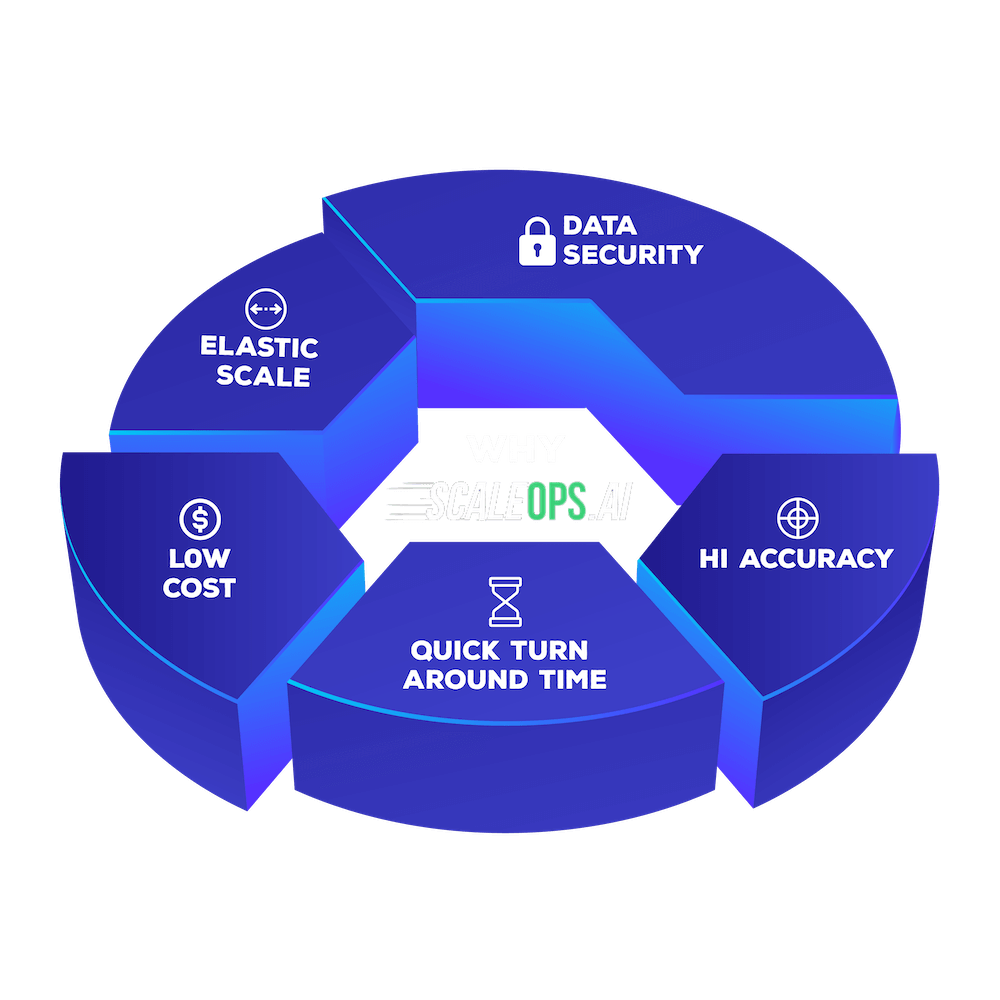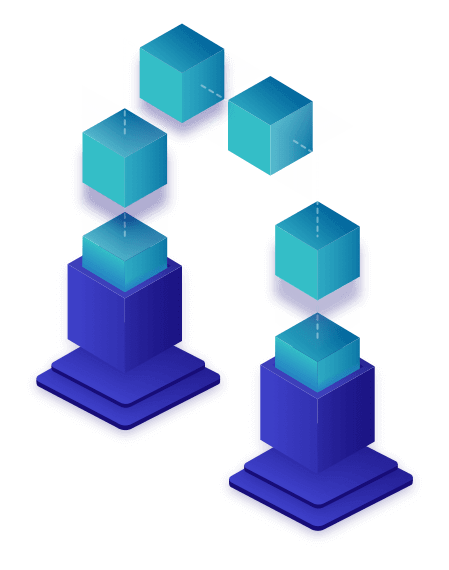ScaleOps is a Hi-Quality, Low-Cost, SOC 2 Certified Secure Image Annotation Company
Are You Ready to Dive Into Your Data Labeling Project?
Types of Image Annotation Services
Different AI applications require Images to be labeled in different ways. The good news is that, whatever your data labeling needs, we have you covered.
In our years of experience, ScaleOps has delivered on deep learning computer vision projects requiring 2D Bounding Boxes, 3D Cuboids, Polygons, Landmark and Keypoint Annotation, Lines, Semantic Segmentation, Splines and Polylines, picture labeling and semantic segregation.
That said, whatever data you need to train your machine learning algorithm, ScaleOps can provide you. Even if training your Deep Learning application requires a different type of Image tagging, our tools and processes are flexible enough to accommodate it.
2D Bounding Boxes (Object Detection)
Rectangular 2-D bounding boxes are drawn around specific objects of interest across a large image set. A PASCAL VOC formatted file, containing the XY coordinates of the bounding box, is the human intelligence data that is used to enrich the original dataset. The goal is typically to train an AI Model for Object Detection in future images. Learn more …
Polygon ANNOTATION
Object detection does not always happen in neat rectangles, and some deep learning applications require a precise outline of objects. Polygon Annotation is for applications that require not just object detection, but a clear outline of the object.
image labeling, categorization
Some applications require Images to be categorized or tagged. Image Tags can be of people in the photo, emotions, scenes, or activities.
landmark Points
Landmark points or Landmark KeyPoints annotation service is used by Deep Learning models to closely understand, and identify the internal shape of objects. Key use cases include facial recognition, gesture and sentiment analysis, directional movement prediction, for sports and for autonomous driving.
Cuboid 3D Bounding box annotation for Object detection
3D Bounding Boxes, or Cuboids, are an advanced form of object detection. They identify not just the rectangular space that an object of interest occupies, but also provide the Deep Machine Learning algorithm a sense of the height of the object in 3-Dimensions.
polyLines lines and SPLINES
Smoothly drawn, fitted, Lines Polylines and Splines enable AI and ML systems to detect boundaries.
Autonomous self-driving cars use this technology for lane detection systems; As do Warehousing robots and security cameras in stores.
Semantic segregation
Semantic Segregation or Semantic Segmentation marks each pixel in the Image to semantically separate all the entities that appear in an image. Semantic Segmentation applications are critical to Autonomous Self-Driving Car technology.
Image Annotation Oursourcing – Why ScaleOps ?
Deciding to Outsource your AI Model Training is a big decision for any Data Scientist. Key questions that data scientists have are:
- Data Security: Will my proprietary data remain secure?
- Quality: Will the annotations be accurate enough to train my model optimally?
- Cost: Is it going to be cost-effective?
- Scale: Can I start small? Can I scale up fast?
- Turn Around Time: I need my model trained ASAP. How long will this take?
Read below to see why ScaleOps is the best Image Annotation Services Outsourcing company for you.
Data Security
More about ScaleOps Data Security
ScaleOps is a SOC 2 Compliant Image Annotation Company, and employees enterprise-grade security controls to ensure the privacy and security of your data.
- All labelers are background-verified, in-house, full-time employees; We do not crowdsource or allow remote work.
- 24/7 Camera surveillance, security guards, biometric security-based access to the delivery floor.
- No bags, pens, paper, mobile phones, electronics, or USB drives allowed.
More about ScaleOps Data Security
Pixel Perfect Acuracy
At ScaleOps, we understand that low accuracy data enrichment is worse than no data at all. Our carefully selected, experienced annotators are trained to make the extra effort to ensure that labels are pixel perfect. Internal HR quality systems assign a share of annotations to multiple labelers to assess individual performance, and use both, sticks and carrots, to control output quality – even at a massive scale.
Low Cost
We strive to deliver the lowest costs in the industry, driven by scale efficiencies, automation, task simplification, and training. We guarantee that you will not find a SOC 2 compliant Secure outsourced data labeling company priced lower than us.
Elastic Scale
No project is too small, or too larger for us. For instance, we have launched projects with one part-time resource and scaled up to 800 annotators. Our ability to take on small projects and our ability to scale fast has been a key differentiator that our clients have benefitted from.
Quick Turn Around Time
We can typically start projects with 10 annotators with 24 hours of notice, and scale up to 100+ annotators within 2 weeks.
With ScaleOps, you can go from the first conversation to data ready model training in record time.
Turn-Key Delivery
From training and managing your team of annotators to upscaling, addressing questions, and assimilating results, ScaleOps has an efficient layer of middle management that will take you from project requirements to results with little to no effort on your end. Just provide your requirements and data to your Client representative. We’ll take it from there.

Computer Vision
Helping computers see the world
From Autonomous self-driving cars to Face Recognition, and Agricultural Drones, the applications of Artificial Intelligence (AI) have gone from fantasy to reality. But all of these applications, require AI Machines to see and understand the world in the way that we humans do.
Computer Vision is a field of Machine Learning (ML) that enables machines to see and interpret the world around them. Camera lenses serve as the eyes and enable computers to convert what they see into images and videos that can be stored on their memory cards.
Then comes the hard part – Teaching machines to interpret the pixels, stored in their image files, in the way that we humans interpret them. To identify animals, humans, objects, activities, and emotions in the images.
This feat of training AI Models is accomplished by labeling, tagging, and annotation of large datasets, coupled with Deep Learning technology.

What is Image Anotation?
Train AI Models to Learn from Humans
Annotators add a layer of “Human Intelligence” to large data sets. They can do this by drawing Bounding Boxes around specific objects of interest, or by classifying human sentiments expressed in images. Armed with this Image data, enriched with the human intelligence layer, deep learning models can be trained to become intelligent – and identify these objects and emotions autonomously in future images.
Data Labeling Tools
ScaleOps offers a Data Labeling tool bundled with our Data Labeling Services. Depending on client preference, we are also open to using any other Annotation Tool that clients recommend. Listed below are some tools we have used in the past.
Broadly, Image Labeling Tools fall into four categories:
Free, Open Source Image Labelling Tools
Typically developed by University Research centers, these tools offer age-old stability, full privacy/security, and low-cost usage. Source code is freely available and downloadable on Github. Examples include Computer Vision Annotation Tool (CVAT), Visual Object Targeting Tool (VOTT), and Labelmg.
Paid Data Labeling Tools
Technology companies such as Supervise.ly, Oclavi, and Prodi.gy provide excelled image annotation tools for a reasonable price. Unlike Computer Vision Annotation toot (CVAT), Visual Object Targeting tool (VOTT), and Labelmg these are not open-source and are typically not free. Also while open source CVAT, VOTT, Labelmg, tools are download, most paid tools are cloud-hosted. Nothing beats free, secure, and open-source, but these tools do have new, upgraded UIs, and for large projects, they are reasonably priced.
Data Labeling Platforms
Severals tools integrate with annotations teams and provide a unified solution, and premium price point (2 to 3 times what ScaleOps might charge). These solutions are typically not as cost-effective engaging directly with an Image Annotation company, such as ScaleOps.
Proprietary Image Labeling Tools
Some Clients present with their own proprietary Image Labeling tools. ScaleOps is able to train on your proprietary tool and deliver your project.

Output Formats – PASCAL VOC, YOLO, or COCO
.. or any other proprietary format you want
PASCAL VOC, YOLO and COCO are the primary output formats we deliver results of our Annotation Services.
PASCAL is an acronym for Pattern Analysis, Statistical Modelling, and Computational Learning. They ran a Visual Object Challenge (VOC), in 2005. The project is famous and the output XML format they used, PASCAL VOC, has now become an industry standard for AI Model training.
COCO (acronym for Common Object in Context), by contrast is a newer JSON based output format that is also commonly used for ML Model training.
YOLO (acronym for You Only Look Once), is an object detection system whose output format has also become commonly used for training Deep Learning Models.
Artificial Intelligence Applications
AI has transformed many industries from transport and finance to marketing and agriculture. ScaleOps has helped clients in several industries with outsourced labeling services.
AUTONOMOUS DRIVING
Self-Driving cars rely on AI and ML technology in conjunction with data tagging.
AI in Fashion
The fashion industry gears up to use AI to identify trends.
Agriculture
Agriculture industry is using ML for Livestock management among other applications.
medical and healthcare
Healthcare industry uses AI for Diagnostics, interpretation of x-rays and other scans, and predictive analysis.
Subscribe For Updates
